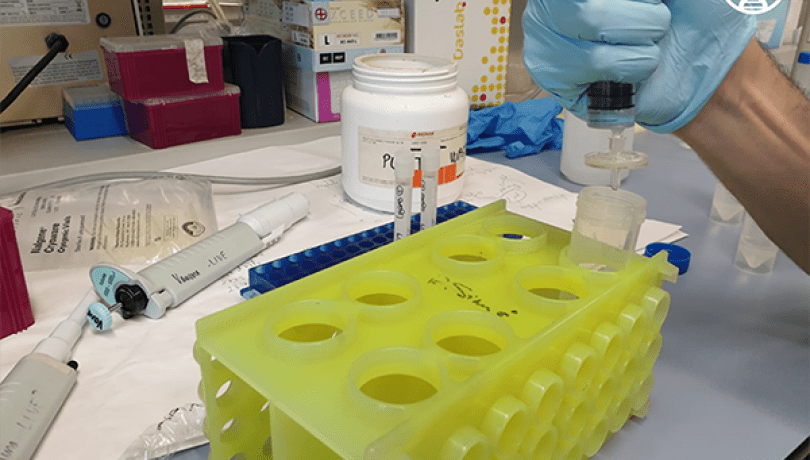A new study shows that two groups of poorly known marine protists routinely ingest viruses to absorb phosphorus and nitrogen, which has important implications for the understanding of oceanic food webs and carbon cycles.

Viruses occur in astronomic numbers everywhere on Earth, not only infecting bacteria, archaea, and eukaryotes of every type, but also floating freely in every habitat from the atmosphere to the deepest ocean. Surprisingly, considering the abundance and nutrient-richness of viruses, since now no organisms were known to use them as food.
Now, researchers from the Institut de Ciències del Mar (ICM) and other research centers have published in the specialized journal Frontiers in Microbiology the first compelling evidence that two groups of ecologically important but poorly known marine protists, choanozoa and picozoa, are virus eaters, catching their “prey” through the engulfing process known as phagocytosis.
“Our data show that many protist cells contain DNA of a wide variety of noninfectious viruses but not bacteria, strong evidence that they are feeding on viruses rather than on bacteria, as previously believed”, exposes Ramunas Stepanauskas, Director of the Single Cell Genomics Center at Bigelow Laboratory for Ocean Sciences in East Boothbay (Maine, USA) and corresponding author of the study.
Stepanauskas, who started the project more than a decade ago, admits that “the findings came as a big surprise, since they go against the currently predominant views of the role of viruses and protists in the marine food webs".
Stepanauskas and colleagues sampled surface seawater from two sites: The Northwestern Atlantic in the Gulf of Maine, and the Mediterranean off Catalonia.They used modern single-cell genomics tools to sequence and amplify the total DNA from 1,698 individual protists in the water.
Thanks to that, they noticed that nineteen percent of amplified genomes from the Gulf of Maine and 48% of those from the Mediterranean were associated with bacterial DNA, suggesting that these protists had recently eaten bacteria. Nevertheless, more common were viral sequences. Concretely, these were found in 51% of amplified genomes from the Gulf of Maine and in 35% of those from the Mediterranean.
“It is very unlikely that these viruses are capable of infecting all the protists in which they were found”, says Dr Julia Brown, a researcher at the Bigelow Laboratory for Ocean Sciences and coauthor on the study. According to the researcher, choanozoans and picozoans probably routinely eat viruses since they a rich in phosphorus and nitrogen, and could potentially be a good supplement to a carbon-rich diet that might include cellular prey or carbon-rich marine colloids.
From the Institut de Ciències del Mar (ICM) of Barcelona, Ramiro Logares, who has also participated in the study, adds that “if it is confirmed that the ingestion of viruses is a widespread phenomenon in marine protists, it would lead us to review our understanding of the basal trophic relationships in the ocean".
According to the authors, the removal of viruses from the water may reduce the number of viruses available to infect other organisms, while also shuttling the organic carbon within virus particles higher up the food chain.